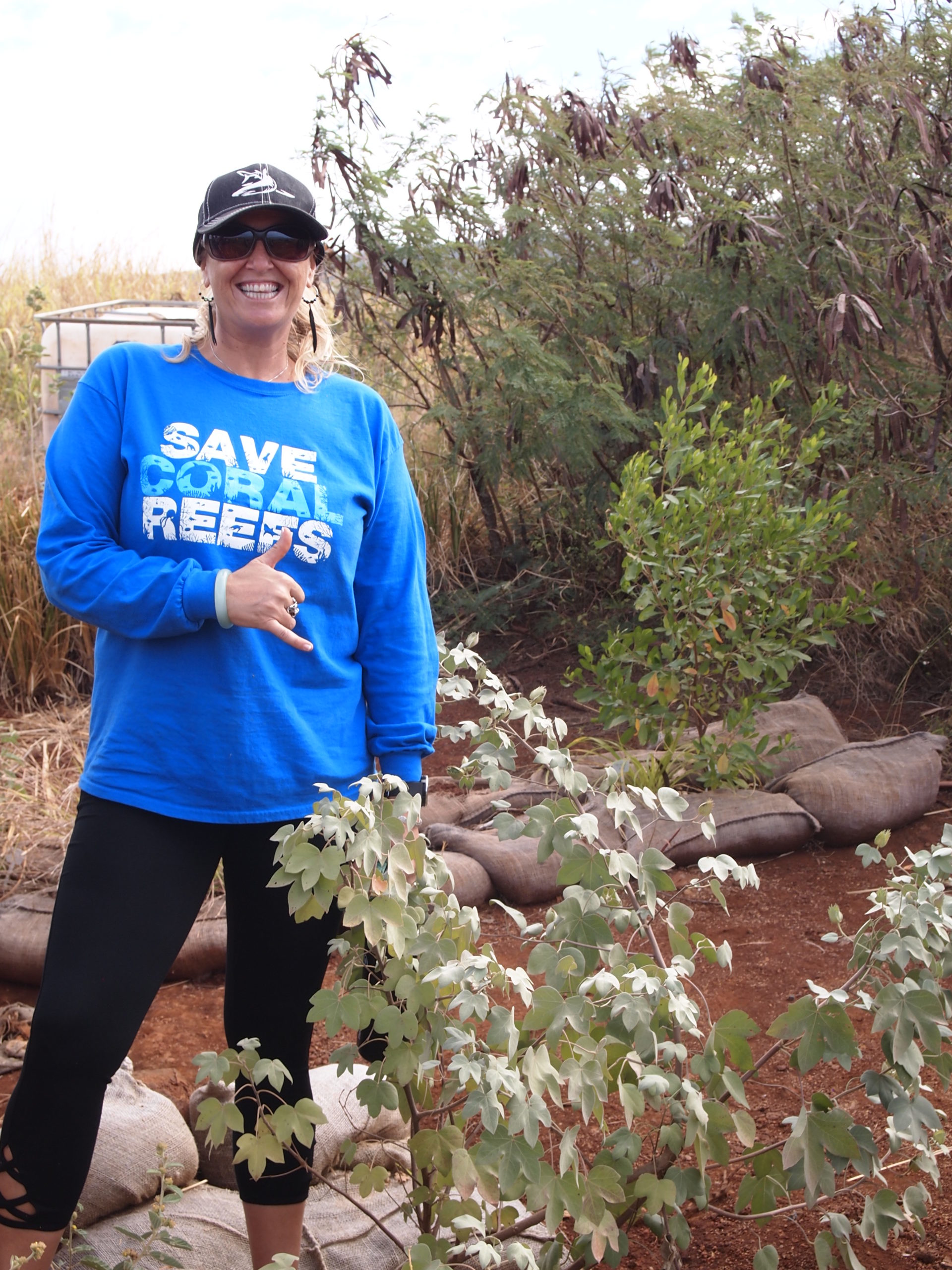 Jen Vander Veur is fighting an uphill battle to save coral reefs on the slopes of West Maui’s mountains. Jen is CORAL’s Program Manager in Maui, and she’s leading the charge on restoring Maui’s once lush forest to stabilize the soil and protect coral reefs downstream from being smothered by sediment, reversing the effects of decades of industrial agriculture for sugarcane and pineapple. Jen’s work takes place in two watersheds of West Maui – Honokõwai and Wahikuli – that were identified as “priority watersheds” by the National Oceanic and Atmospheric Administration (NOAA).
Jen Vander Veur is fighting an uphill battle to save coral reefs on the slopes of West Maui’s mountains. Jen is CORAL’s Program Manager in Maui, and she’s leading the charge on restoring Maui’s once lush forest to stabilize the soil and protect coral reefs downstream from being smothered by sediment, reversing the effects of decades of industrial agriculture for sugarcane and pineapple. Jen’s work takes place in two watersheds of West Maui – Honokõwai and Wahikuli – that were identified as “priority watersheds” by the National Oceanic and Atmospheric Administration (NOAA).
The uphill location of CORAL’s restoration projects tends to surprise people, but what many people don’t realize is that what happens on land has a direct impact on the shoreline. During heavy rainfall, soil and contaminants in watersheds enter streams, travel downstream, and get dumped directly into the ocean. Because ocean currents travel from West Maui’s shores to the coastlines of neighboring islands, these pollutants can end up on coral reefs near and far.
The name Wahikuli means “the noisy place” in Hawaiian, named for the sound of rushing water and the loud birds that lived in the cava and breadfruit trees. The forest of native plants once held the soil in place, but now the trees, birds, and water are all gone, and the only sound left is the wind rustling over fallow fields. Decades of commercial farming for sugarcane and pineapple leveled the forest and left a network of dirt roads that provide the ideal conditions for massive amounts of sediment to enter streams and the ocean during rainstorms.
Jen’s work isn’t easy. She’s trying to reverse the effects of decades of industrial agriculture by bringing back the forest. She’s also dealing with modern-day challenges, like motorcyclists accidentally running over saplings and monitoring equipment being stolen. Yet she and our team in Maui have made incredible progress, building on years of research by local partners and working groups.
Jen leads CORAL’s monthly Watershed Restoration Day, where a team of volunteers plant native seedlings across abandoned roads to prevent erosion. So far, over 200 volunteers have planted approximately 8,000 plants that hold the soil in place and reduce pollution for coral reefs downstream. This work comes at a critical time; Hawaiian reefs are currently experiencing a bleaching event from the warming waters of climate change. But by providing clean water for coral reefs in Maui and across the Hawaiian islands, we can help corals survive these bleaching events and remain a part of Hawaiʻi’s rich landscape and culture.

